Resources
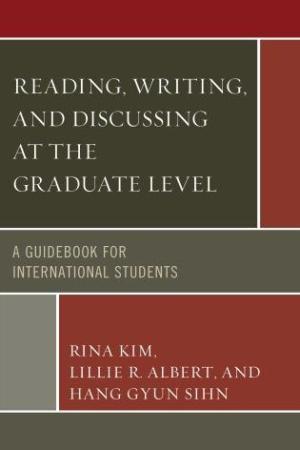
Reading, Writing, and Discussing at the Graduate Level A Guidebook for International Students by Rina Kim, Lillie R. Ablert, and Hang Gyun Sihn is a new resource for graduate international students and those who work with them in the academic setting. The three authors come from diverse personal and academic backgrounds and draw from their experiences as international students themselves and from working with international students in developing this text. They provide a guidebook for students who are proficient in English but struggle to understand the “academic culture and norms in the United States” (ix). Each chapter focuses on a different aspect of graduate level work; academic reading, in-class discussions, writing assignments, preparing oral presentations, and developing relationships with classmates and professors. The authors do a good job of stating the limited scope of their effort. They recognize that the text is not going to provide a comprehensive primer on academic writing or research, but they point out common ways in which international students are derailed in their efforts because they misunderstand expectations. Throughout the text, the authors draw on informal conversations they have had with students to illustrate common perspectives or misunderstandings. The scenarios they highlight help to clarify issues and suggest ways of moving forward. These scenarios provide some of the most helpful insights in the book. International students may find chapter two on “Engaging in Academic Discussions” and chapter five on “Developing Social and Academic Relationships” to be the most helpful because they discuss at length ways to build confidence and helpful hints for anticipating the atmosphere of classroom interactions in the United States. The most effective aspects of each chapter are the ways in which the authors show how perspectives and expectations differ even in basic items such as how reading lists are arranged in a syllabus or clarifying the expectation to write in your own words. The subtle nuances of the academic culture of the United States are dealt with in a relaxed manner, encouraging students to ask questions or seek help when necessary. The text does assume a high level of reading proficiency. This is stated clearly by the authors, but the writing might be too complex for the students who are seeking the type of assistance the book covers. Although the main audience is the international student, this book is probably more helpful for faculty members who are beginning to teach international students. The informal scenarios that are scattered throughout the book provide a helpful window into the mind of the international student. Faculty members or other mentors will find this text helpful as they shape assignments, engage international students in classroom discussions, and articulate expectations.
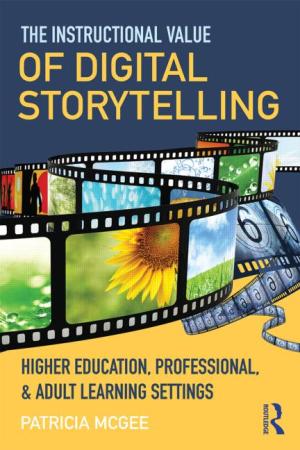
Digital Storytelling originated in the early 1990s in the matrix of what was then called “new media”: a mix of graphics, photography, videography, audio recording, and video and audio editing. As first developed at the Center for Digital Storytelling in California, workshop participants learned to create a two- to three-minute first-person story in a digital format that could be shared via the Internet. By 2000 when media production software became commonly available on personal computers, what had been the realm of professional artists and media producers became a potential playground where ordinary people of all ages could be empowered to craft and to share digitally a succinct, poignant, brief first-person video story. Since then, this form of storytelling has found advocates around the world: in small villages in Wales; in schools from elementary to college-level in the U.S.; in museum art programs in Australia; and in social service and social justice organizations in the U.S., Africa, and elsewhere; and in youth faith formation in Norway and Denmark. Major universities now offer education courses in this method, from the University of Cardiff in Wales to the University of Hawaii. ESL teachers have successfully employed this technique to help immigrants tell their stories. PhD students have written dissertations that explore the evolution and application of Digital Storytelling in a variety of settings, and media and cultural studies scholars have analyzed this phenomenon as it has been introduced in multiple cultures. While the original short format is referred to with initial capital letters, the wider field of digital media storytelling has evolved and now takes many forms. Patricia McGee has carved out a portion of this diverse world of digital storytelling and limited her comments to “Higher Education, Professional, and Adult Learning Settings,” which is still a very wide scope. She divides this well-researched work into three sections that provide excellent overviews of past storytelling traditions and new twenty-first century approaches; current institutional uses and emerging models for digital storytelling; and applications in diverse cultural and institutional contexts. She advises readers to turn to whichever section they find of most interest. Theological educators and religious studies professors will most benefit from exploring the third section on applications. With a little imagination, they can envision how the digital storytelling examples McGee cites can be translated for application in their classrooms and how their ministry students and graduates can use digital storytelling in youth ministry, faith formation, catechumenal processes, new members gatherings, church building transitions and anniversaries, and church websites. McGee, Associate Professor of Digital Learning Design at the University of Texas at San Antonio, is evidently a master of her wide-ranging, fast-evolving field. She is a good guide, one who will stretch the vision of theological and religious studies educators. By introducing this creative, communal digital storytelling process in their classrooms, their students can learn to empower themselves and others to claim their voice.
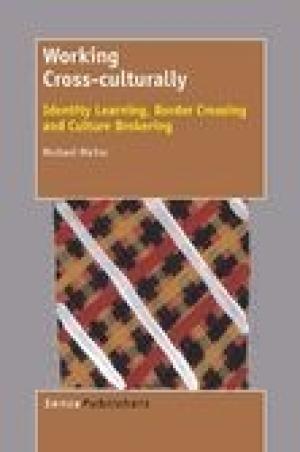
Michael Michie’s 2014 publication of his dissertation argues that previous research into cross-cultural teaching has focused on skills, methods, and curriculum, but ignores teachers. To address this lacuna, Michie interviews six professional, western, K-12 science teachers of indigenous students and investigates what qualities characterize successful cross-cultural teachers and how teacher training can prepare instructors for cross-cultural contexts. Michie’s work makes three contributions to pedagogical discussions of cross-cultural teaching. First, Michie provides a sustained examination of the ways cross-cultural experiences shape teachers into “culture brokers” or “border crossers.” Michie claims the most successful teacher of indigenous students learns to be a border crosser in his or her identity formation even before entering the classroom. Second, Michie analyzes successful border crossers and constructs a profile of a border-crossing teacher. Finally, Michie suggests what kind of training shapes teachers to be successful culture-brokers. Michie claims an “international” framework for his study (1), but limits his subjects to those teaching in western, English-speaking sites (Australia, New Zealand, and Canada, 141). Michie argues that his focused data allows him to speak more precisely, and leaves expansion of this deep, thorough analysis to successive studies. Michie’s project unfolds in six chapters. In chapter one he defines the project and identifies himself as a “participant-researcher” with his subjects (2). In chapter two, Michie reviews the literature on western teaching of indigenous children. He sifts the anthropological, biological, and ethno-historical studies on “border crossing” and “cultural brokerage” (5) to refine the terms. He defines culture “as the social environment in which an individual is raised and lives and includes a range of concepts and beliefs that is accepted by individuals as defining their group identity” (14). The role of education is to “help those growing up in a culture find an identity within that culture” (Michie cites Bruner 1996, 15). This move brings identity studies and questions of power into the forefront of pedagogy – the (western, powerful) identity of the teacher and the (indigenous, marginalized) identity of the students. Thus teaching requires dexterity and self-awareness in crossing cultural borders. Michie’s first contribution is to distinguish between terms in the literature. In his subjects, Michie finds that “border crossing” (“the ability of people to move metaphorically between cultures,” [50]) is a specific identity formed in “marginal people” (51). In contrast, “culture broker” (“a strategy which an individual can be used to promote cross-cultural understanding,” [51]) is the “role” that an “intermediary” chooses when mediating between cultures (52). Next, Michie proposes that teachers in cross-cultural situations can choose a mediating role while actively cultivating respect and appreciation for the cultures they move between (as border crossers do; 52, 79). In chapter three, Michie analyzes the participant interviews looking for evidence of border-crossing experiences and cross-cultural encounters earlier in life. Teachers of indigenous students report positive affective and cognitive experiences when they engaged (pre-professionally) indigenous and first nation people (73). Michie identifies three successive degrees of engagement in the teachers. “Border crossers” choose a transitory role and show “interest in the culture and aspirations of indigenous people”; “border workers” “continue to work at the border as allies of the indigenous people”; “border mergers” exhibit a fully bi-cultural identity and do not distinguish between the cultures they navigate (80-81). Chapter four examines how participants understand the role of culture broker or border-crosser and for what purpose they use that role. Chapter five evaluates participant ideas of how to enable teachers to cross cultural borders in their classrooms. Michie then defines what kind of training can best shape K-12 instructors to teach from a culture broker role. Finally, chapter six summarizes Michie’s conclusions and applies the best teacher training practice to specifically preparing western instructors to teach science as foreign cultural knowledge to indigenous students. This study can be applied to the pedagogy of religion in at least two situations. First is for college or seminary instructors to consider teaching the academic study of religion as a “foreign” way of knowing. How might students of deep religious conviction respond differently to a perceived exercise of dissecting their sacred text if instructors cross that cultural divide between confessional faith and academic study first? The same cultural crossing might bring “nones” into a new world of thinking about and reflecting analytically on religion. Second, Michie shows that, as professional teachers, our cultural identities and our ability to meet students have already been shaped – positively or negatively. Reflecting on the degree(s) to which we are able to meet our students, cross metaphorical and cultural borders, and broker academic culture with newcomers is critical to our growth as teachers.
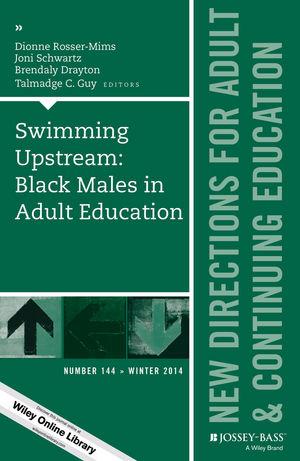
What person of sound mind would make a conscious decision to swim upstream against the current of turbulent waters? The correct answer is “probably no one.” Swimming upstream requires not only excellent navigational skill but perhaps, more importantly, demands that one possess the tenacity and spirit of a survivor. That is precisely why the metaphor “swimming upstream” is so appropriate in describing the plight of scores of African-American men who elect to enter and succeed in higher education (1). Swimming Upstream: Black Males in Adult Education is one volume in the series entitled: New Directions for Adult and Continuing Education. This anthology is intended “to make space for the experience and voices of Black men in the canon of adult education literature, to promote a critical assessment of institutional policies and practices, and to foster awareness and involvement among adult educators” (89). The format of this book is well-suited for academic settings. Each essay is preceded by a short introductory paragraph. At the close of each chapter the authors provide a robust list of reference sources that should prove helpful for students and educators alike. The first chapter discusses the impact of race and racism in the American adult educational system. Chapter two addresses myths and stereotypes employed to depict Black men and their influence on educational attainment. Chapter three explores the reasons for entering adult basic education programs and the role of gender identity. The topic of high school equivalency is discussed in chapter four. Chapter five addresses young Men of Color and engagement in adult learning. Chapter six is concerned with college reentry for African-American males. Chapter seven addresses the sobering topic of Black male college study following a term of incarceration. Chapter eight discusses military veterans and access to the GI Bill to pay educational expenses. The final essay, chapter nine, culminates with a call to action for educational practitioners. Understanding context is critical. In recent years a growing constituency has emerged that believes society has entered a post-racial or “colorblind” era. They advance the proposition that one’s race or ethnicity has no bearing on one's ability to survive and prosper in modern America. I strongly disagree with the post-racial theorists but recognize that it would be helpful for books like Swimming Upstream to squarely confront the legitimate concerns of post-racial proponents. In so doing one hopes that individuals on both sides of the argument will ultimately reach a consensus that the mission of ensuring equal educational opportunities for every individual remains a struggle that must still be waged today. Swimming Upstream moves that discussion forward with compelling statistical and anecdotal evidence. In 1903, the late W.E. B. DuBois prophesied in The Souls of Black Folks that the problem of the twentieth century would be the “color line” – the invisible yet palpable line of demarcation between Caucasians and African-Americans that was often characterized by overt discrimination and bigotry. More than one century later the question of whether “Black lives matter” is, in my view, a logical extension of DuBois’ central thesis. It can be argued that Swimming Upstream may unintentionally serve to remind us that certain remnants of the issues raised by DuBois remain unresolved today. For some readers this will speak to the relevance and timeliness of Swimming Upstream. An average book informs and a good book intrigues the reader. But an excellent book sparks self-reflection and may even compel one to act in new and bold ways. As a college instructor I routinely survey students to ascertain why they decided to embark on a college education. The primary responses from students generally, and African-American males specifically, are: “I want to make my parents proud of me” and “I want to set a positive example for my children/siblings/family.” Those learners confirm what I have long known to be true: that given equality of economic and institutional opportunities, African-American males have no less potential to achieve academic and vocational success than any other segment of the American population. College study may not be right for everyone but it must become accessible for anyone. Arguably that is the controversial and exciting rationale for Swimming Upstream. It is an excellent anthology that serves to affirm our collective belief in the basic humanity and intellectual capacity of every individual.
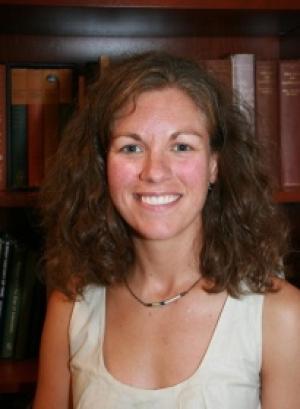
Molly Bassett Associate Professor of Religious Studies Georgia State University In my last post, I talked about the final class of my new course “Between Animals and Gods” and promised to say more about the informal student evaluations I give at the end of courses. Like students everywhere, mine take

Nancy Lynne Westfield Associate Professor of Religious Education Drew Theological School Sometimes learning is accompanied by tears, theirs and mine. The concept of mis-education is so disquieting to some students that tears are shed in the classroom. Never has there been bold sobs or muffled cries of languished sorrow

Theological school deans are not just theological leaders for their institution, they must be EDUCATIONAL leaders. That is, they must implement sound educational practices related to curriculum, instruction, supervision, assessment, and administration. While faculty members can focus on course-level and...
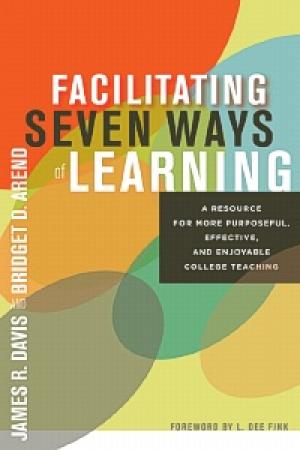
Two university educators who have led campus teaching and learning centers and worked as academic administrators have served us all well with their Facilitating Seven Ways of Learning. Davis and Arend seek explicitly to connect teaching practices to specific learning goals chosen for university classes. Not only do I recommend this book to you, but I will use it in my January PhD Teaching Seminar. At times the language of the book is a bit grand, talking about being “trapped” in a “lecture paradigm” with an “obsolete” view of learning (5, 8). They claim “confusion reigns as the paradigm crumbles (15).” I forgive them, for it does not continue too long. Perhaps the assumption was that a grand view was necessary to sell books to skeptical readers. Nevertheless, the book delivers what it promises: to help faculty, trained as scholars, researchers, and writers, to focus additionally on being effective teachers concerned about learning – for citizenship, personal development, and the ongoing generation of knowledge. Conversation about teaching is increasing in graduate schools, professional schools, and universities. At a recent consultation, I heard faculty members talk among themselves about how they trusted their colleagues, knew that individual classes were faithful and effective, and yet were concerned that their overall curricular goal for critical, integrative practical theological wisdom was not occurring. One mentioned that they all worked hard at fulfilling goals for individual classes, but had not attended to specific integrative commitments of their curriculum together. Facilitating Seven Ways of Learning is a way to begin addressing that concern. After assisting faculty to define course learning goals, the authors take seven explicit learning commitments and demonstrate effective pedagogical practices. The seven ways of learning are: building skills; acquiring knowledge; developing critical, creative, and dialogical thinking; cultivating problem-solving and decision-making abilities; exploring attitudes, feelings, and perspectives; practicing professional judgment; and reflecting on experience. One can see the influence of Bloom and Shulman here. The authors help faculty clarify how learning goals connect with these seven ways of learning and offer concrete strategies for teaching. To quibble: I am not certain that simply reflecting on experience is a goal. Is it not more a learning strategy for professional judgment, acquiring knowledge, or practicing decision-making skills? Regardless, this book will generate conversation among faculty members and will assist them to make the move from learning commitments to classroom strategies. As mentioned, I will use this book in my next PhD teaching seminar. Faculty are committed to assisting doctoral students to consider the vocation of teaching, connect academic study with teaching, and gain practical skill in course design and teaching practices. I have brought together bibliographies on theological education, course design, and learning strategies that I routinely share with graduate students. With Facilitating Seven Ways of Learning, students can practice naming commitments of their disciplines and their own scholarship, explore the learning goals they have for their students, dialogue with faculty mentors about the particular concerns of classes, and connect teaching practices to learning commitments. Clearly this book was written after years of experience in a college teaching center, empowering faculty colleagues. I recommend it.

Nancy Lynne Westfield Associate Professor of Religious Education Drew Theological School God is unknowable. So, the things of God cannot be learned – they must be revealed. What does it mean to teach our students to wait for the revelation, to be aware of the revelation, to find joy in
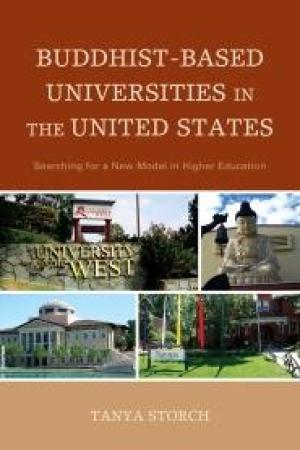
Expressing her concern about the current direction of higher education in the West, Dr. Storch argues that we can learn from the pedagogical principles of four “Buddhist-inspired” universities in the U.S. The first four chapters of this slim book each focus on one of these universities. Each is “a university that is state-accredited, which offers degrees in liberal arts and professional fields, and at the same time uses Buddhist pedagogical principles” (vii). Each chapter begins with a one to two page description of the school’s campus and the values its landscape and architecture embodies. This is followed by a brief biography of the male leader who founded the University or its parent Buddhist organization. These biographies, which occupy roughly a third of each chapter, are taken from official materials published by the organizations. The final two sections of each chapter review describe the historical founding of the school, its curriculum, and the impressions of its students. Data is drawn from websites and other promotional materials, and a few interviews. The last section of each chapter outlines the Buddhist pedagogical principles used at these universities, and the impact the author sees these having on students. The fifth and final chapter is the most engaging part of the book. Here the author discusses Buddhist pedagogical principles in three categories. (1) “Mindfulness”: Even though traditional meditation practice is not required, or even taught, at all of these schools, an atmosphere of mindful engagement is cultivated, and this is beneficial for students and faculty. (2) “Interconnectedness of all life”: These schools emphasize this principle inside and outside the classroom. Students are treated as real people, not as consumers; there is plenty of green space and fresh air in the classrooms; and values of environmental protection and vegetarianism are promoted. (3) “Right motivation for giving and receiving education”: These schools resist the pervasive contemporary tendency toward the commodification of all things, especially education. Students are taught values instead, and faculty and administrators treat students with compassion. This book concludes with a reflection on two of the pedagogical themes of the book: the teaching of meditation and ethical education (meaning an education that is both ethical toward students, and that teaches students to be ethical themselves). There are many places where the author could have deepened her inquiry. For example, how much do the educational models described here, which focus on educating the whole person and a commitment to values, represent a novel approach to education, and how much do they repeat already well-established models of liberal arts education? Also, although other Asian religions have not established comparable schools in the U.S., there is a long history of religiously-based liberal arts education, such as Jesuit Universities. How do these different approaches compare? Ultimately, this book is short in length and narrow in scope. The first four chapters range between thirteen and eighteen pages, without notes. The most substantial chapter is the fifth, and it could easily have stood alone as a journal article. This chapter raises a few important points about Buddhist pedagogical principles, but the book as a whole seems only half finished, and at this price it is difficult to recommend it to the readers of this site.
Wabash Center Staff Contact
Sarah Farmer, Ph.D
Associate Director
Wabash Center
farmers@wabash.edu